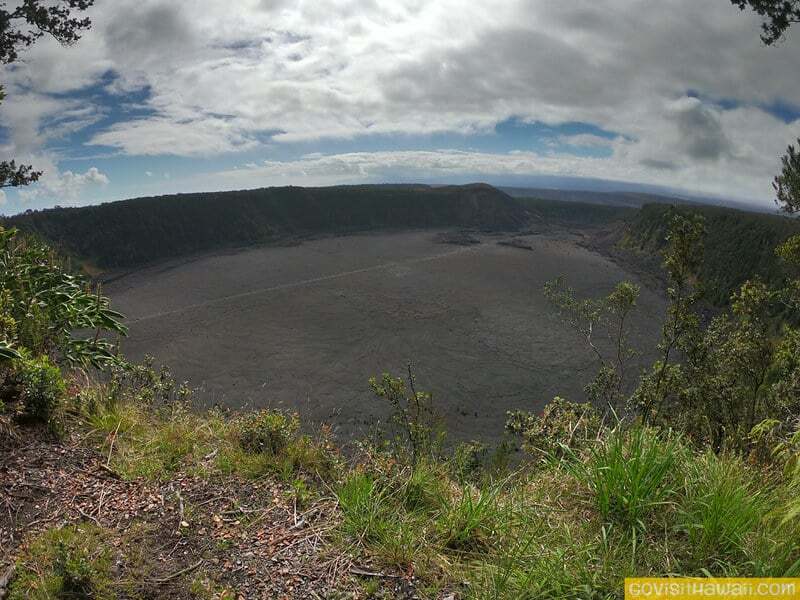
When you vacation on Hawaii’s Big Island, one thing you must not miss is spending at least a day exploring the wonders of Hawaii Volcanoes National Park. It’s truly amazing to see acres upon acres of hardened pahoehoe and a’a lava, massive craters, steam vents, lava tubes, petroglyphs, Ohia trees, and the giant hapu’u ferns, just to name a few of the fascinating sights. You’ll also see a stark contrast between the lush rainforest areas of the park and the barren lava fields.
As you plan your day or two or more at Hawaii Volcanoes National park, you do need to be prepared for the special environment there. The park’s website has loads of useful information for planning your visit, so do check it out. In this post, I share additional tips along with my insight to help you plan your visit.
Based on our multiple visits to Hawaii Volcanoes National Park, we have some tips and tricks that we’ve learned and want to share them with you.
Planning ahead before your visit to Hawaii Volcanoes National Park
There are no gas stations inside the park, so make sure you have plenty of gas. To be on the safe side, have your gas tank close to full. There is a gas station in the village of Volcano that’s just outside the park.
Do plan to bring plenty of water with you.
Consider bringing snacks to keep you fueled up for this day or exploration and advanture. There are restaurants in the park — Kilauea Military Camp and Volcano House. Both restaurants are located off Crater Rim Drive. You’ll also find a few restaurants and shops in the small village of Volcano, which is just outside of the park. Here’s a link to the TripAdvisor member ratings of the Volcano restaurants.
Choose your clothing and footwear wisely. Wear shoes that are good for hiking. Even if you don’t plan to hike, getting to some of the lookouts require you to walk over the uneven surfaces which can be tricky. If you plan some hiking, it’s best to wear hiking pants to protect your legs in the event that you fall on jagged, hardened lava. The elevation of Kilauea’s summit is approximately 4,000 feet above sea level, which is noticeably cooler than the beach locations. So bring a light, breathable, waterproof jacket to wear in the summit areas, if needed. Wear a hat or visor to protect your face, but be sure to hang on to your hat if it’s a windy day at the summit. Wear sunglasses to protect your eyes. Finally, don’t forget to slather on your sunscreen.
Bring a flashlight if you plan to walk through the lava tube and or visit at dusk, dark or dawn.
Be prepared to pay an entrance fee. Visitors now have an option of pre-paying for a digital entrance pass.
If possible, arrive in the park early in the morning to beat the crowds. Note that the park is open 24 hours per day.
Things you should and shouldn’t do as you expore Hawaii Volcanoes National Park
Make the visitor’s center your first stop. The folks here are friendly and very helpful. At the visitor’s center, politely ask about the conditions and any closures, pick up a park map and trail maps. Ask about any special events or guided hikes that may be offered the day of your visit. Ask for advice on viewing the lava activity, if it’s active.
Make sure you are aware of the hazards in this unique environment. For example, volcanic fumes are hazardous to everyone, so limit your exposure. See all the park’s advice for your safety.
Don’t be tempted to go wandering off trails. It is very, very easy to get disoriented and lost if you go off trail.
Top sites to see in Hawaii Volcanoes National Park
The park has so much to see and do. Some people only have hours available to spend inside the park while others allow days of exploration. For those with just hours or a day, here are the spots you must not miss when you visit:
- See Halemaumau crater from the Kilauea Overlook. Note that in the past decade, there have been several eruptions and lava flows in this crater.
- See the steam banks
- See Nahuku/Thurston Lava Tube
- See Kilauea Iki Overlook (it’s just across the parking area from the Nahuku/Thurston Lava Tube)
- Drive the Chain of Craters Road to the end, stopping along the way at places that catch your eye. At the end of the road, be sure to see Holei Sea Arch.

Will I see lava when I visit Hawaii Volcanoes National Park?
Everyone wants to the red hot lava erupting. Sometimes Kilauea is active and sometimes it’s not. Sometimes it erupts within the park boundaries and sometimes it’s outside of the boundaries. In short, it’s unpredictable. See my post on how to find the most up to date information on what’s going on with the Big Island lava flow. You can follow the daily updates of Kilauea from the Hawaiian Volcano Observatory’s Kilauea reports. Be sure to also check with the park’s website and visitor’s center. If you do have the opportunity to see the lava flow, review my tips for watching the lava flow.
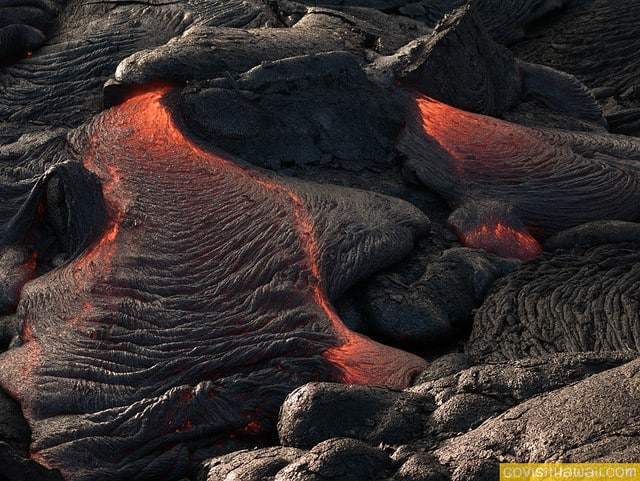
Some fun ideas for your visit to Hawaii Volcanoes National Park
- One of my favorite hikes in all of Hawaii is the Kilauea Iki trail. So, do check it out if you have three or four hours to spare.
- The small nearby village of Volcano has a post office. Send yourself and your friends a postcard from [a] Volcano.
—
So these are my tips, for those of you who have been to Hawaii Volcanoes National Park, what other advice would you add? Please share your thoughts on visiting the park and your tips.
—-
See more ideas of what to see and do on Hawaii’s Big Island.

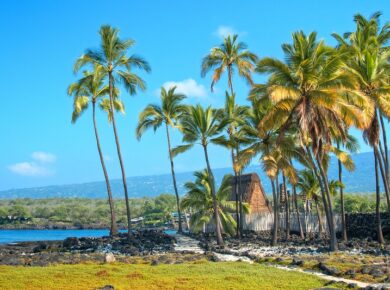
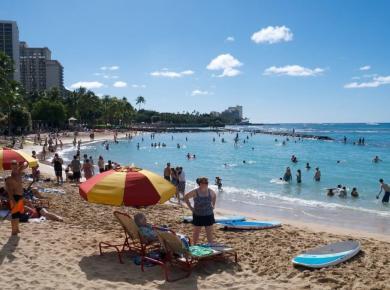
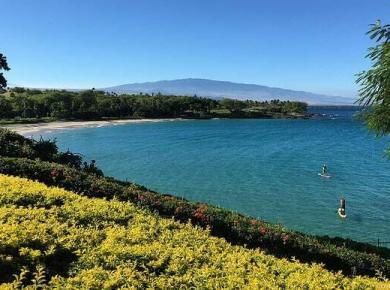
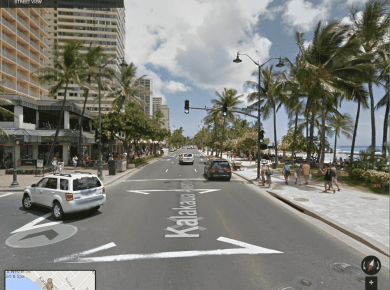
4 comments
I would plan on dedicating two days to explore the volcano.
You can easily spend a full day driving around, taking pictures and looking at all the cool stuff & another day to make the hike out to the lava and back.
How would you budget your time?
Any thoughts about helicopters or boats?
You’re right on with the gas tip. We had plenty, but I definitely did not realize how long the Chain of Craters Road was. Fill up–it’d be a long walk back.
Thanks, Dave, for your input on how long to plan. I realize there’s not a one size fits all scenario for how many days to plan to visit HVNP, but I usually advise staying in that area for a minimum 2 nights. The first time there, we spent our first three nights in Volcano and we weren’t even lucky enough to see any lava activity at the time.
My thoughts on helicopters? I love the idea. From a bird’s eye view, you can better appreciate the force and vast area the volcano has altered. Plus, if you’re lucky enough to get to see lava flowing, you’ll never forget the sight!
I only know of one boat tour (http://www.lavaocean.com) which just takes people to see the current lava flow to the ocean. I would have liked to have taken this tour the last I was there, but just couldn’t fit it in.
Thanks for seconding the motion to fill up the gas tank, kjb. Oh my, I’d hate to think about having to walk from the end of Chain of Craters Road, with all those miles of heat soaking black lava. I’m getting thirsty just imagining it.